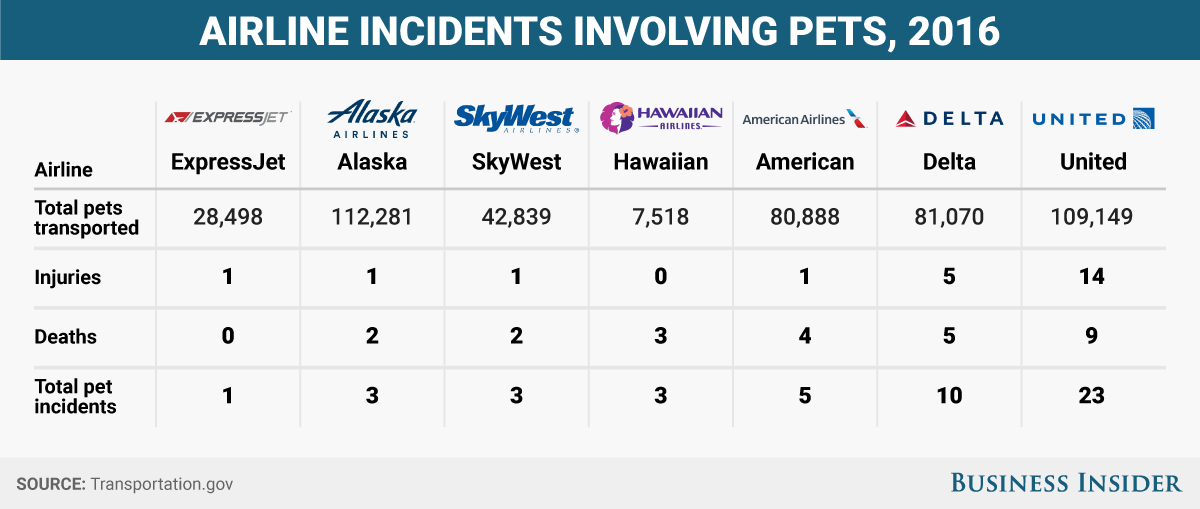It has been a gruesome few weeks for United Airlines. After making international headlines for dragging a paying customer off a plane, it earned yet more notoriety when a giant bunny died on one of its flights.
This led Business Insider to research which airline was the worst when it came to pet deaths. Its investigation led to the brutal headline: "United had more pet deaths in 2016 than any other major US airline."
Ouch! But is it true? Technically yes, but statistically no. And it's the statistics that matter, not the raw numbers.
Here's the original graphic Business Insider created:

United killed nine pets. That's more than any other airline about which Business Insider collected data. Case closed, right? Wrong.
Business Insider failed to do basic statistics, which is to calculate how many pets died for every pet that traveled. In epidemiology, this is known as the mortality rate, and it is usually presented as X number of deaths per 100,000 people. In this case, we would calculate X number of pet deaths per 100,000 pets that traveled on a particular airline. If Business Insider had crunched the numbers, this is the chart they would have made:

Whoa! Somebody phone the ambassador to Hawaii!1 The mortality rate for pets on Hawaiian Airlines is nearly 40 per 100,000. That's almost 5 times worse than the pet mortality rate on United Airlines.
If we analyze the number of "pet incidents," which includes both deaths and injuries, Hawaiian is still the worst airline. United has 21.1 incidents per 100,000 pets, while Hawaiian remains at 39.9 per 100,0002.
So, Business Insider's headline should have read: "Hawaiian Had Worst Pet Safety Record of Major U.S. Airlines in 2016." Instead, we got a sensationalist, click-bait headline that smeared United3. That's journalistic malpractice, plain and simple4.
Notes
(1) Hawaii is a foreign country, right?
(2) This entire analysis could be made more complicated by analyzing the number of deaths or injuries per pet-mile traveled. (For example, if one pet travels 1,000 miles, that is 1,000 pet-miles.) Often, traffic safety data is calculated in this manner.
(3) United doesn't need help from journalists in smearing its reputation. It's doing a perfectly fine job by itself.
(4) An article in USA Today says that from 2012 to 2017, United was responsible for 1/3 of all pet deaths. But the article does not describe how many pets were transported during this time. To his credit, the author did report "incident rates" for 2015 and 2016.




